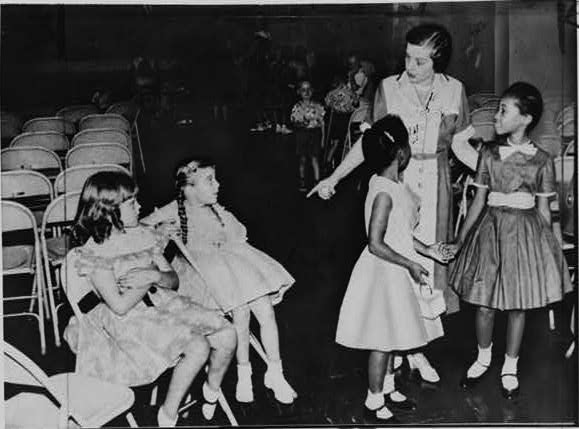Ansley T. Erickson, Making the Unequal Metropolis: School Desegregation and Its Limits (Chicago: University of Chicago Press, 2016). 390 pp. notes, index. ISBN 978 0 226 02525 4.
Reviewed by Walter C. Stern
For decades the relationship between the value of housing and the desirability of schools has been practically inescapable. Realtors hype or pooh-pooh the purported quality of schools, and they point to web sites that map home prices alongside school ratings. Zip codes appear to dictate a child’s educational and economic destiny. Until recently, however, urban historians largely failed to explore the origins of the seemingly self-evident connection between schools, metropolitan geography, and financial well-being.
Ansley Erickson’s Making the Unequal Metropolis takes a major step toward filling this void. Underscoring the inseparability of urban and educational history, Erickson explores educational inequality in Nashville from World War II through the end of Metropolitan Nashville’s court-supervised school desegregation in 1998.

Nashville serves very well as a case study because its 1963 consolidation with Davidson County pulled urban, suburban, and rural students into a single metropolitan school district. Here then is an inviting opportunity to consider what happens when desegregation unfolds, with apparent success, across an entire metropolitan region.
Unlike the more familiar Sunbelt stories where a powerful central city—Houston, Dallas, or Phoenix—annexed contiguous suburban municipalities, Nashville’s voter-approved consolidation “proceeded largely on suburban terms.” Consolidation boosted the city’s flagging finances, but it also diluted black voting strength and, at least initially, fortified the white suburban communities that defended segregation.
 Nashville, of course, had long been highly segregated. Erickson shows how federal policymakers aided and abetted Nashville’s pro-growth elite as they used schools as “organizing nodes” in the creation and reinforcement of the unequal metropolis. Building upon Clarence Perry’s Progressive era concept of a “neighborhood unit” organized around a school, these actors leveraged urban renewal funds during the 1950s and 1960s to jointly expand and increasingly segregate housing and schools. Into the 1970s, they prioritized suburban school construction while closing inner-city schools.
Nashville, of course, had long been highly segregated. Erickson shows how federal policymakers aided and abetted Nashville’s pro-growth elite as they used schools as “organizing nodes” in the creation and reinforcement of the unequal metropolis. Building upon Clarence Perry’s Progressive era concept of a “neighborhood unit” organized around a school, these actors leveraged urban renewal funds during the 1950s and 1960s to jointly expand and increasingly segregate housing and schools. Into the 1970s, they prioritized suburban school construction while closing inner-city schools.
Civil rights attorneys, showing that “de facto” segregation was, in fact, contrary to law, pressed for crosstown and then county-wide busing. They initiated a desegregation lawsuit in 1955 and in 1971 secured a plan that utilized busing to achieve extensive desegregation in more than two-thirds of the district’s schools. And it was precisely Nashville’s unified metropolitan school district that made busing more feasible than elsewhere. Further litigation yielded an expanded 1983 plan in which Metropolitan Nashville became one of the nation’s most successfully desegregated systems. By 1990, when one-third of black schoolchildren nationally attended schools with “highly concentrated” black populations, Nashville had almost no schools with student bodies that were more than 90 percent white or black. Along with Charlotte, Louisville, and Tampa, Nashville would become “one of desegregation’s best-case scenarios.”
What Erickson shows, however, is that numbers alone were poor indicators of success. “Statistical desegregation” did not translate into a genuine equal educational opportunity. She contends that the ways in which educators, city planners, and judges understood busing ultimately proved deficient. She argues that desegregation plans were crafted to benefit white suburbanites at the expense of inner-city African Americans, who frequently saw their neighborhood schools close as buses shuttled their children to predominantly white institutions in distant suburbs. The “integrated” schools also reinforced inequality through their curricula. Vocational programs, for example, prepared black and white students for racially and gender differentiated labor markets. In effect, much of the problem here stemmed from policies prioritizing schooling’s economic rather than democratic value.

As efforts to assuage white resistance outstripped efforts to advance equal educational opportunity, Nashville and the courts abandoned desegregation in 1998. The consequences were dramatic: by 2009, Nashville was trending toward the national norm with more than one-fifth of its black students in “highly concentrated” black schools.
Erickson laments this re-segregation and asserts that “the time may be right to engage with desegregation as an important and necessary American project.” This muted call for desegregation matches her emphasis throughout on the inequalities—rather than the advances—embedded within one of the nation’s most successful efforts to eliminate segregated schooling.

This disquieting assessment cautions against mistaking a paradox such as desegregation for a panacea. Yet Erickson’s attention to the metastasizing yet persistent nature of inequality does not suggest the need to abandon either desegregation or its democratic potential. By illuminating the ways individuals and institutions constructed educational inequality, Erickson provides clues for taking it apart.
This book deserves special attention from urban historians for its nuanced analysis of metropolitan desegregation and its revision of conventional explanations of metropolitan stratification. While scholars have typically emphasized housing policies and markets as drivers of stratification, Erickson shows that schools to a significant degree shaped the metropolitan landscape and political economy.
Featured image (at top): Miss Mary Brent, principal of Glenn School, greets pupils, both white and African American, in a previously all-white school, 1957, Prints and Photographs Division, Library of Congress
Walter C. Stern is Assistant Professor of Educational Policy Studies and History at the University of Wisconsin–Madison. His research focuses on the historical intersection of race and schooling in the urban United States. He is the author of Race and Education in New Orleans: Creating the Segregated City, 1764–1960, and he is working on a book on the intertwined histories of school desegregation and mass incarceration.



One thought on “The Inequality of Nashville Skylines: A Review of Ansley T. Erickson’s Making the Unequal Metropolis: School Desegregation and its Limits”